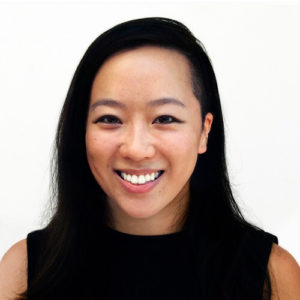“One Square Mile, 10,000 Voices” – Using Augmented Reality to Enrich Historic Site Interpretation
Documentary Filmmaker, Sue Ding and sound artist Halsey Burgund will share the California Humanities grant-winning project, "One Square Mile, 10,000 voices," which communicates the complex and difficult history of the Manzannar National Historic Landmark, a site of Japanese incarceration during World War II.
At Manzanar, where more than 10,000 Japanese Americans were incarcerated during World War II, audio files are now geolocated across the landscape. Using a mobile app and headphones, visitors to the National Historic Landmark will be able to walk through the site while being introduced to oral histories, scholarly observations, and comments of other visitors.
Ding and Burgund will talk about the challenges and opportunities of integrating augmented reality into historic sites and will cover how artists, advocates, historic preservationists, and other stakeholders can help ensure the history of sites is told through the lens of those whose histories are often overlooked in historic sites.
You Will Be Able To...
- Fully involve community stakeholders in historic site interpretation
- Integrate participatory components into historic sites using new technologies
- Identify common challenges of historic site interpretation and design, along with methods for overcoming those challenges
- Understand the components and tools required to complete a successful augmented reality (AR) project
About Sue Ding and Halsey Burgund

Sue Ding
Sue Ding is a documentary filmmaker and immersive media creator based in Los Angeles. She directs and produces nonfiction media—from feature documentaries to VR—with a focus on identity, storytelling, and social justice. Her production credits include projects for PBS, The New York Times, MIT Media Lab, and various arts and nonprofit organizations.
Sue also consults on interactive and multiplatform projects, writes about documentary and emerging media, and serves as Senior Programmer for New Media at the Los Angeles Asian Pacific Film Festival. Her current projects include a documentary about Asian American representation in media, and an audio AR installation for Manzanar National Historic Site.
Sue is an alum of MIT’s Open Documentary Lab and Comparative Media Studies graduate program, and also holds a dual B.A. in Visual Art and International Relations from Brown University. Her interests include location-based storytelling, participatory documentary, food culture, contemporary art, hybrid cinema, speculative fiction, and augmented reality.
-------------

Halsey Burgund
Halsey Burgund is a musician and sound artist living outside Boston. Both his installations and musical performances make extensive use of spoken human voice recordings as musical elements, alongside traditional and electronic instruments. He collects these voices from otherwise uninvolved individuals whom he records in various locations, from museums to street corners to rock clubs, via in-person interviews, smartphone apps and the internet. In many ways, Halsey's work is a combination of socio-anthropological 'research', musical documentary and contributory experience.
Halsey has exhibited and performed in museums and galleries internationally, including the Aldrich Contemporary Art Museum, the deCordova Sculpture Park and Museum, Puke Ariki Museum (NZ), Tyne & Wear Archive and Museums, Newcastle, UK, the Museum of Science, Boston and the California Academy of Sciences. He was awarded a Smithsonian Artist Research Fellowship to explore their audio archives for future work and is currently a fellow in MIT’s Open Documentary Lab as well as a Research Affiliate at the MIT Media Lab.
Halsey conceived and developed the open-source Roundware audio platform for his installation work which enables the creation of contributory, location-based audio experiences. Halsey's work with Roundware has led him beyond his individual artwork to working on educational audio projects at various museums and cultural institutions - including the Smithsonian, UNESCO and the Exploratorium - as well as investigating the uses of Roundware for accessibility purposes for people with vision impairments.
